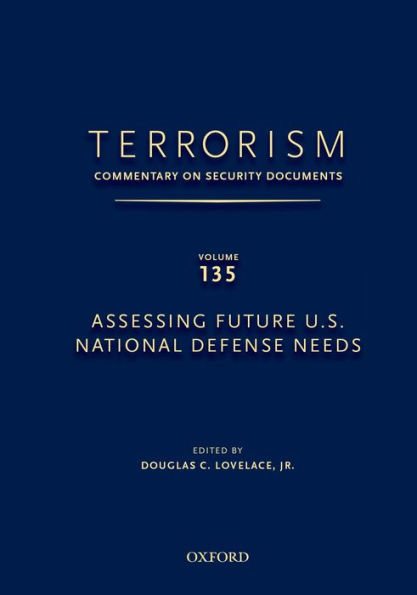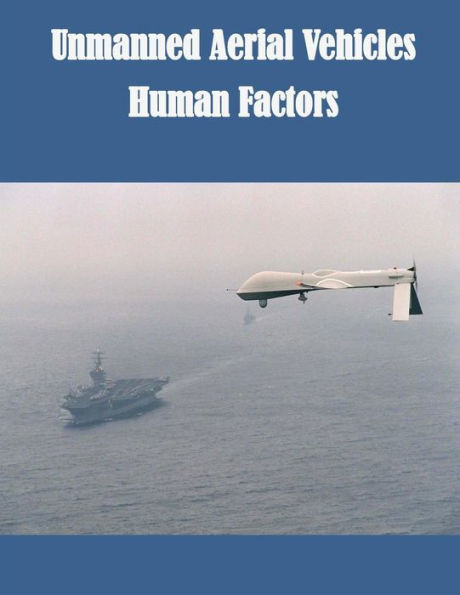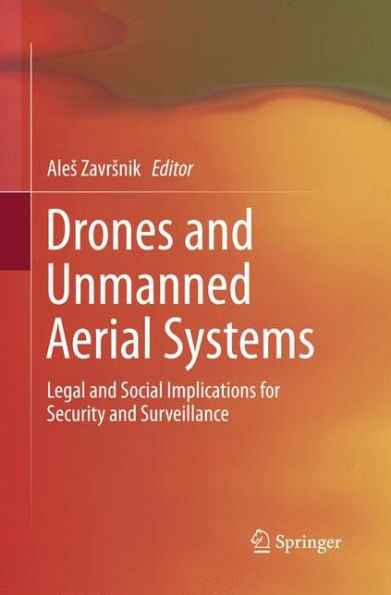Home
TERRORISM: COMMENTARY ON SECURITY DOCUMENTS VOLUME 134: The Domestic Use of Unmanned Aerial Vehicles
Loading Inventory...
Barnes and Noble
TERRORISM: COMMENTARY ON SECURITY DOCUMENTS VOLUME 134: The Domestic Use of Unmanned Aerial Vehicles
Current price: $120.00


Barnes and Noble
TERRORISM: COMMENTARY ON SECURITY DOCUMENTS VOLUME 134: The Domestic Use of Unmanned Aerial Vehicles
Current price: $120.00
Loading Inventory...
Size: OS
*Product Information may vary - to confirm product availability, pricing, and additional information please contact Barnes and Noble
Terrorism: Commentary on Security Documents
is a series that provides primary source documents and expert commentary on various topics relating to the worldwide effort to combat terrorism. Among the documents collected are transcripts of Congressional testimony, reports by such federal government bodies as the Congressional Research Service (CRS) and the Government Accountability Office (GAO), United Nations Security Council resolutions, reports and investigations by the United Nations Secretary-General and other dedicated UN bodies, and case law from the U.S. and around the globe covering issues related to terrorism. Most volumes focus on a single theme, and inside each volume the documents usually appear within topic-based categories. The series also includes a subject index and other indices that guide the user through this complex area of the law.
Volume 134,
The Domestic Use of Unmanned Aerial Vehicles
, examines an issue that is just now beginning to emerge as a subject of public debate, as the implications of new technological capabilities begin to become clear and the legal limits of the uses of those technologies begin to be tested. Professor Douglas C. Lovelace, Jr., who has provided the introductory commentary to this volume, has selected several illuminating documents that examine various aspects of this issue. These documents consider the expanding use of unmanned aerial vehicles (or drones) for surveillance activities by both border enforcement and domestic law enforcement officials; the privacy implications of the potentially highly intrusive surveillance capabilities of drone technology; and concerns that drones will be used for non-surveillance purposes within U.S. borders. Other topics include the state of the unmanned aircraft manufacturing sector in the U.S., the legal implications of the integration of drones into domestic airspace, and the constitutional implications of the expanding use of facial recognition technology.
is a series that provides primary source documents and expert commentary on various topics relating to the worldwide effort to combat terrorism. Among the documents collected are transcripts of Congressional testimony, reports by such federal government bodies as the Congressional Research Service (CRS) and the Government Accountability Office (GAO), United Nations Security Council resolutions, reports and investigations by the United Nations Secretary-General and other dedicated UN bodies, and case law from the U.S. and around the globe covering issues related to terrorism. Most volumes focus on a single theme, and inside each volume the documents usually appear within topic-based categories. The series also includes a subject index and other indices that guide the user through this complex area of the law.
Volume 134,
The Domestic Use of Unmanned Aerial Vehicles
, examines an issue that is just now beginning to emerge as a subject of public debate, as the implications of new technological capabilities begin to become clear and the legal limits of the uses of those technologies begin to be tested. Professor Douglas C. Lovelace, Jr., who has provided the introductory commentary to this volume, has selected several illuminating documents that examine various aspects of this issue. These documents consider the expanding use of unmanned aerial vehicles (or drones) for surveillance activities by both border enforcement and domestic law enforcement officials; the privacy implications of the potentially highly intrusive surveillance capabilities of drone technology; and concerns that drones will be used for non-surveillance purposes within U.S. borders. Other topics include the state of the unmanned aircraft manufacturing sector in the U.S., the legal implications of the integration of drones into domestic airspace, and the constitutional implications of the expanding use of facial recognition technology.















